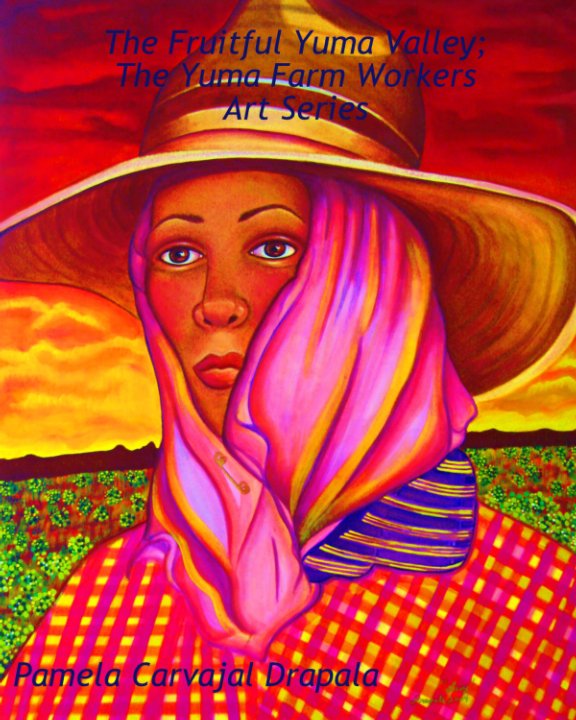The Fruitful Yuma Valley
The Yuma Farm Worker Art Series
by Pamela Carvajal Drapala
This is the price your customers see. Edit price list
This book is available to buy on Amazon
About the Book
The Fruitful Yuma Valley
When I first started driving to work in the Yuma Valley eighteen years ago, approximately a 30-minute commute, I barely noticed what was happening around me. After our two daughters left home to attend Northern Arizona University, it was as though a filter was lifted from my eyes.
I began to see the entire splendor that surrounded me as I drove through the Yuma Valley. The contrast of the patchwork fields against the indigo sky was wonderment to my eyes. Often, I would see the valley change its colors as a thick cloud formation slowly shadowed the multitude of different farm crops.
During the late spring, I saw a sea of greens, sunflower yellows, crimsons and creams, and sometimes-luscious plum colors in a few of the valley crops. A field that had been flood irrigated; it seemed as though it was a lake. Birds such as cow egrets, and occasionally a gray pelican, often hovered overhead and drank from the refreshing waters.
Long before my daily work began in the morning, many farm workers were already laboring in the fields by either preparing the fields for new crops by hoeing the land, planting the seeds, or harvesting the abundance of crops depending on the time of the year it was in Yuma. Surprisingly, I would also see the farm workers at the end of their day after I returned home from a night class at the local college.
I took an interest in the valley, the people, crops, landscape, birds, and animals by first observing them closely and then reading about them. I soon learned that lettuce, citrus, watermelons, cauliflower, tomatoes, potatoes, artichokes, cotton, cabbages, dates, peaches, pecans, Sudan grass, and others grow right here in our Yuma Valley. Ah, Yuma can definitely be defined as . . . "The Fruitful Yuma Valley", my town, and my life.
When I first started driving to work in the Yuma Valley eighteen years ago, approximately a 30-minute commute, I barely noticed what was happening around me. After our two daughters left home to attend Northern Arizona University, it was as though a filter was lifted from my eyes.
I began to see the entire splendor that surrounded me as I drove through the Yuma Valley. The contrast of the patchwork fields against the indigo sky was wonderment to my eyes. Often, I would see the valley change its colors as a thick cloud formation slowly shadowed the multitude of different farm crops.
During the late spring, I saw a sea of greens, sunflower yellows, crimsons and creams, and sometimes-luscious plum colors in a few of the valley crops. A field that had been flood irrigated; it seemed as though it was a lake. Birds such as cow egrets, and occasionally a gray pelican, often hovered overhead and drank from the refreshing waters.
Long before my daily work began in the morning, many farm workers were already laboring in the fields by either preparing the fields for new crops by hoeing the land, planting the seeds, or harvesting the abundance of crops depending on the time of the year it was in Yuma. Surprisingly, I would also see the farm workers at the end of their day after I returned home from a night class at the local college.
I took an interest in the valley, the people, crops, landscape, birds, and animals by first observing them closely and then reading about them. I soon learned that lettuce, citrus, watermelons, cauliflower, tomatoes, potatoes, artichokes, cotton, cabbages, dates, peaches, pecans, Sudan grass, and others grow right here in our Yuma Valley. Ah, Yuma can definitely be defined as . . . "The Fruitful Yuma Valley", my town, and my life.
Author website
Features & Details
- Primary Category: Arts & Photography Books
-
Project Option: Standard Portrait, 8×10 in, 20×25 cm
# of Pages: 78 -
Isbn
- Softcover: 9781320394857
- Publish Date: Sep 07, 2015
- Language English
- Keywords art, farm worker, yuma, environment
See More


